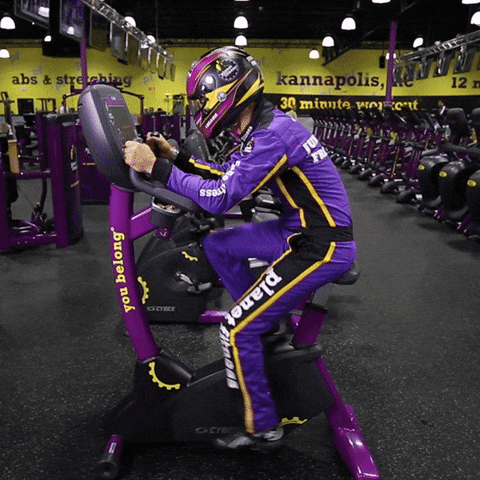Football Conditioning ... STOP running this preseason
We hear a lot of horror stories about how coaches ruin gridiron football players because of the manners in which they condition the athletes. We all know the horror stories: linemen having to do the exact same running as the wide receivers and running backs are completing. Running on the extremely hard ground might create shin splints that can lead to stress factors.

Athletes are doing long-distance type of training and not doing any type of speed training that can help with endurance later in a game. Athletes are having to do all the stupid, archaic conditioning concepts. Using these out-of-date methodologies also lacks periodization. The lack of periodization is just beating the athletes up with no regard for the athletes’ improvement. We don’t want to be beating up athletes. We want to be making them better players.
We can learn a lot from these mistakes.
1. Understand Each Specific Position
In football, the endurance needed by the athletes is highly dependent on which specific position is being trained for. For instance, offensive linemen will usually be playing fifty to seventy plays in one game over the span of two to three hours. Each play will be between seven to twelve yards for offensive linemen. Sometimes less, sometimes more. Typically the plays will cover seven to twelve yards. It is a really simple concept.
Coaches can easily sit down and analyze and monitor the players in each game. Learn how far they are running and what types of physical effort are being put forth each and every play. This can be broken down to set up actual conditioning. This can be done for every position.
We can compare this to running backs or wide receivers. Wide receivers playing fifty to seventy plays in a spread offense are running between ten and eighteen yards every single play. Sometimes a lot more. While if we run a wing-t offense, those distances being run are a little bit less because of not running as long of routes (or as often).
Breaking this down for each specific position we can start to see the difference and set up endurance-based training around each specific position and body type, setting players and the team up to have success late in the game because of superior endurance training.
2. Understanding Training Endurance Types And Its Impact On Recovery
When we think about endurance-based training, we think about a few things. One thing we think about in football is athletes having speed endurance. Meaning that late in the game athletes are able to hold their speed at a higher end. They are able to utilize and maintain their speed with minimal diminishment throughout the game.
We need football players with tremendous speed endurance. We can use interval-based training to help train this modality. We can also utilize specific speed work with more volume to build a base. We need to problem solve how to improve speed for athletes late in the game when they are under a lot of fatigue.
This leads us to cardio-based endurance. In this case, we can think about a player who comes out in the third quarter and their performance dramatically. Athletes with a very poor level of overall cardio need their engine built up.
To improve this, we can improve their overall endurance. We can have athletes do steady-state cardio. Things like sitting on a stationary bike with cyclical base work to save the joints will work as well. We need to improve the overall cardio aspect in a smart and thoughtful manner.

Mental fatigue under endurance-based training is a big thing. This concerns decision-making. Look at penalties and errors. For instance, maybe in the first half no flags are thrown, but come the second half, late in the game, the team has a higher prevalence of committing penalties because of being fatigued.
We can get athletes on a stationary bike operating at a level where they can hold a conversation. We can get athletes on a treadmill walking for thirty minutes. Simple tasks help. From there, add time to the movements but keep them simple. Steady-state cardio won’t beat the athletes up or make them slower. Actually, it will help their recovery.
At this point, we can step the mental acuity challenge up. We can start asking athletes questions about plays. Asking them to describe what goes on during the game. In this manner, the athletes will be more aware and increase their decision-making and critical thinking skills.
3. Understanding The Effectiveness Of Slow Endurance
Slow endurance, especially for the big dudes, can do a lot to improve overall engine performance. The cardio is used primarily to improve overall recovery. Think of getting on a stationary bike or a treadmill, nice and easy, not doing anything crazy, and operate fifteen to twenty minutes, we can utilize that slow endurance to improve their recovery.

If their endurance is higher and their engine is bigger, athletes will recover better from their strength work, plyometric work, and they will learn how to adapt quickly while not being beaten up. We are only utilizing slow endurance as a means of generally increasing athletes’ overall engine. Use the slow endurance to improve the engine. Use interval training and high volume sprinting to improve other aspects where athletes may lack.
We can even use weight room based training with OTM (on the minute) intervals. For instance, having athletes perform fifteen power clean singles at 70% OTM to improve athletes’ endurance.
And finally, under this header, get athletes in a sauna three to four times a week to see an improvement in their recovery and overall endurance.
4. Periodizing Overall Performance In The Weightroom, Endurance On The Field, And Educating Athletes On Their Overall Nutrition
What does this heading even mean?
It means that we can pick specific times of the season to focus on endurance. We can pick specific times of the season to focus on improving resistance-based training. Improving maximal lifts in various movements.
We also need to understand that we have strength and speed with endurance training right next to one another. They can all work together as long as we bring in the nutritional concepts. We need to educate athletes on how nutrition can impact their overall performance. We need to teach athletes how to replenish their glycogen during practice and games. Approaching nutrition properly leads to better physical performance and better mental performance on the field.

Recap
When we get to the fourth quarter, the athlete and team operating at the higher percentage are likely going to win. The athlete and team will be making fewer mistakes, putting themselves in better positions, and take advantage of their opposition.
And again, we need to understand the differences between each position on the field, especially when periodizing conditioning for football endurance.
Let us know what you think and comment below.
DANE MILLER
Dane Miller is the owner and founder of Garage Strength Sports Performance. He works with a select handful of clients on building comprehensive programs for fitness and nutrition. Several times a year he leads a workshop for coaches, trainers, and fitness enthusiasts.


